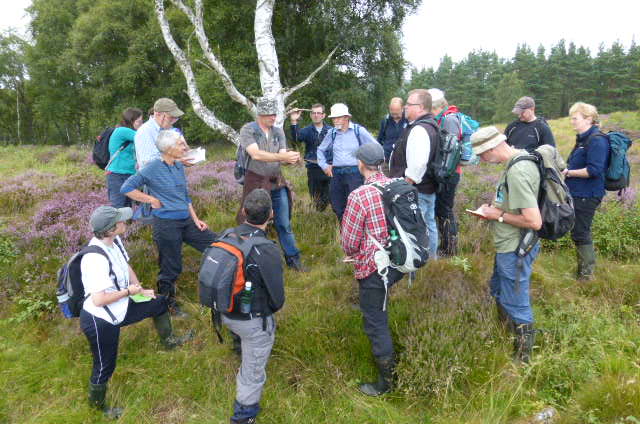Blog written by Glenn Roberts, North East Scotland Biological Records Centre Co-ordinator.
The outcome of the SBIF Review is very important for Scotland’s biodiversity. There is now a clear opportunity for the Scottish Government to act upon the Review’s recommendations and revolutionise the way that biological data is produced, managed and analysed to ensure informed decision making and to benefit Scotland’s wildlife and habitats.
Since I started working at the North East Scotland Biological Records Centre (NESBReC) in 2007 there has always been discussion about the need for a sustainable strategy for managing biological data across the whole of Scotland. Indeed, that need has been around for much longer than just those 12 years. A disjointed situation has persisted where some parts of Scotland are well served and covered by a Local Records Centre (LRC) but other areas do not have an LRC at all. NESBReC was set up in 2000 and has steadily forged good working relationships with individual recorders and the local authorities of Aberdeenshire and Aberdeen City in order to stimulate recording and to aid the use of species and habitat data in the local decision making process. Presently, there are close to 1.5 million records in the NESBReC database that are searched regularly for a range of interests, such as planning applications, research, site management and even general interest. However, just to the south, the local authority area of Angus has no LRC and this situation is replicated in many parts of Scotland. This patchwork situation is clearly unfair and does not serve the whole of Scotland well.
I think I speak for most Scottish LRCs when I say that the very least outcome we want to see from the Review is that there is full coverage of the whole of Scotland and that support for the framework is sustainable. The Review identifies the preferred model as being one where financial support comes from central government in Scotland through an environmental levy. I think that this is a clear and simple solution. It is the only solution that will lead to achieving truly open biological data in Scotland, something that is surely the preferred goal.
The long and detailed SBIF Review consultation process highlighted the importance of working at the local level to inspire and support the general public in appreciating their local wildlife, recording what they see and then submitting those records for future use. Existing LRCs have been doing that since they started out and the SBIF Review recommends that there should be such regional hubs covering the whole of Scotland. Where these hubs are to be located exactly is up for discussion but there may well need to be as many as 10, under the supervision of an overarching Scottish co-ordinating body, most likely an NBN Scotland.
NESBReC training event on the identification of plants in bog and heath habitats in Aberdeenshire
There are also potential benefits to society, not just to wildlife or data users. The regional hubs can help people to engage with nature, increase awareness of biodiversity and encourage people to care about their natural environment. In addition, people who are actively engaged in recording may become more active physically, as well as mentally – all important in terms of health and wellbeing.
Of course, at this stage the SBIF Review is nothing more than a set of well researched and devised recommendations and we can only hope that the Scottish Government grasps this opportunity to effect change. We all now need to do our bit to make sure that the Review remains on the agenda, encouraging the Scottish Government to discuss the issues and make an informed decision.

